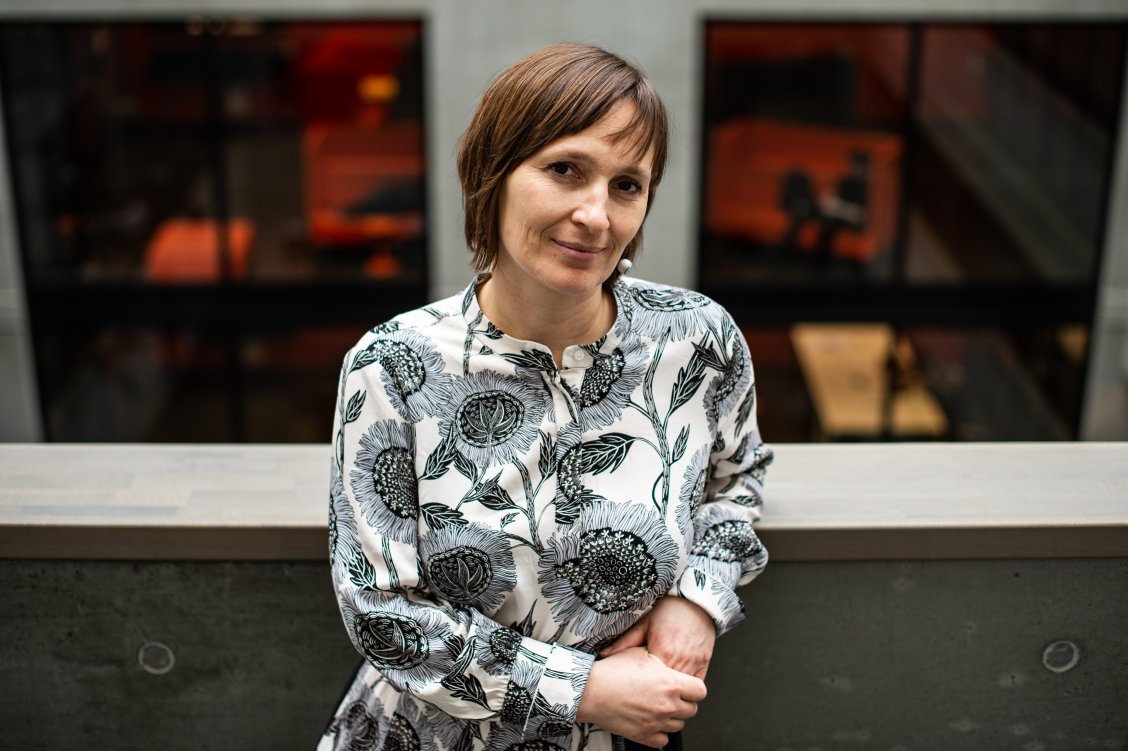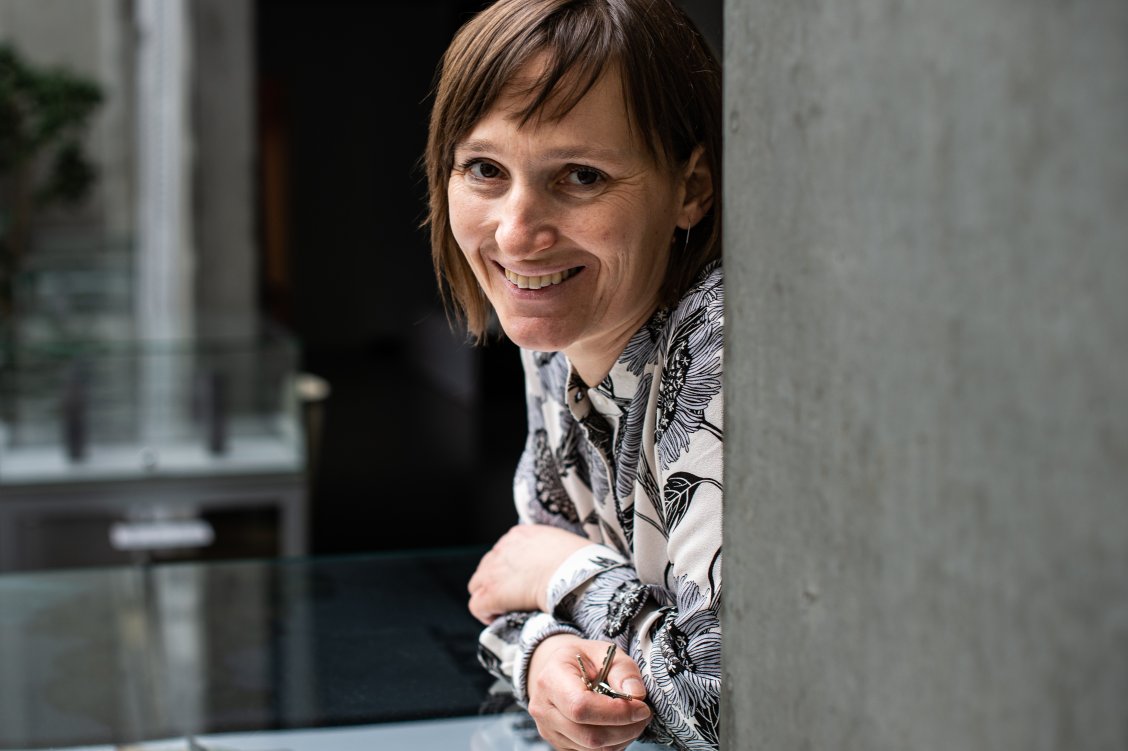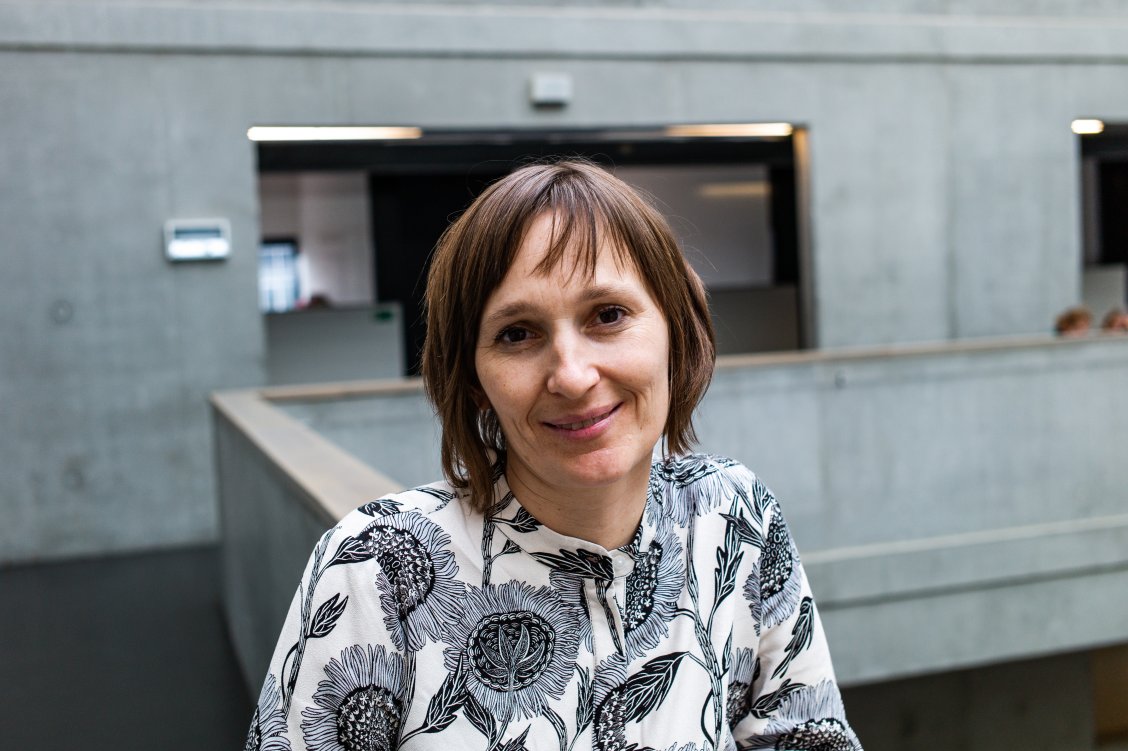Ombudswoman Dita Jahodová: The issue of care and equality has been with me all my professional life
3/3/2023

Why did you apply for the vacancy in which the Faculty of Architecture of the CTU was looking for an ombudsperson?
I have been interested in the topic of equal opportunities and reconciling work, study and personal life for a long time. I know the academic environment from different sides, first as a student at Charles University in Prague and then as a teacher. At Masaryk University in Brno, I have taught courses during my doctoral studies. For undergraduate students I prepared introductory seminars on gender and society as well as other specific courses focused on LGBTQ issues. I also taught a course on research methods for many years for master's students at Charles University. I have also tried my hand as a researcher in ethnographic research.
Recently, I have mostly been involved in gender audits in academic settings. I have met progressive men and women in the leadership of schools and research institutions who have stood up for setting a level playing field. In your role as an auditor, you talk to employees and students and address what they would need to make their work and study experience better.
I saw that the management here was open to new challenges and that as ombudswoman I would be able to contribute to change, which I saw as a meaningful opportunity.
Do you already know what are the key areas you want to focus on?
During the admission procedure I asked the Architecture Students' Association for the results of their questionnaire survey. The topic of student overload stood out very clearly. Moreover, I joined at the time when a joint initiative of students of the Faculty of Architecture and the Faculty of Civil Engineering, Don't Click and Sleep, was launched. We will continue to address their suggestions with the Dean, the Vice Dean for Education, the Vice Dean for Public Relations and our counterparts in the Faculty of Civil Engineering.
The overloading of young architects is a recurring problem. Every generation of students tries to address it at some point, usually with little progress.
That is why it is important to take a more comprehensive approach to the issue and find solutions that are systemic and sustainable in the long term. The concrete steps that can be taken are subject to negotiation and will require some involvement of both students and teachers. In relation to the psychological difficulties that students are pointing out, I met with colleagues from CIPS (the Centre for Information and Counselling Services at CTU) and the ELSA Centre for Supporting Students with Specific Needs, who were very helpful. We agreed to cooperate on several levels, both in the area of prevention and in dealing with specific suggestions. I am very happy that we have set up a common procedure, for example, when someone comes to me in an acute phase of anxiety or depression.
Following our agreement, colleagues from CIPS and the ELSA Centre organised a meeting of ombudspersons working at CTU in early February. Representatives of the units preparing the establishment of the ombudsperson position also attended. I think that this could be a good platform for mutual cooperation at interfaculty level. Since the beginning of my work I have also been communicating with the ombudswoman of Charles University and ombudspersons at DAMU, FAMU and the Faculty of Arts of Charles University. We share, with confidentiality, our experiences, for example in dealing with various challenging situations. We would like to work together to cultivate the academic environment to make it more safe and fair. And this is not only towards the students, but of course also towards the employees, where we think not only of the teachers, but also of the technical and administrative staff.
You mentioned gender audits. The very word audit can make people afraid. Can you explain how such an event takes place and what the outcome is? Would you be happy if a gender audit was also carried out at the FA?
Thank you very much for this question. The FA will be undergoing a gender audit during the spring. I will be partially involved in the design of the survey. The actual process will be up to the external auditors. My participation will be intense at the end, in the development of recommendations and the creation of a gender equality plan.
The audit is primarily focused on male and female employees and has defined areas of focus. The first area is gender equality across the vertical and horizontal structure of the organisation. The auditors will therefore look at how women are represented on boards, committees, senates or scientific or artistic councils. But they are also interested in how they are present across disciplines.
The next section is dedicated to career development and how women and men can grow in the organisation.
There is a lot of discussion at some faculties about supporting young women scientists, because it is not always easy for women at the beginning of their careers, especially when they are balancing work and childcare. In some fields, such as electrical engineering, the annual shortfall is almost fatal. It is very important to keep people on parental leave in touch with the field. The development is so dynamic that they would never be able to jump back on to the momentum.
Balancing work and personal life is also important. Many male and female employees today belong to the sandwich generation and are also caring for their ageing family members. Our society is gradually ageing, and this topic will become increasingly relevant. So it is good if the employer is prepared and has appropriate arrangements in place.
Another very prominent and current topic of the gender audit is negative phenomena in the workplace such as various forms of bullying, whether mobbing, bossing or staffing. Negative phenomena also include harassment, both among employees and in the teacher-student relationship. In the Czech academic environment, not only do we encounter that teachers may harass students, some patterns of student behaviour may be harassing towards teachers. Harassment can also occur among students themselves.

Have you received any first suggestions of this type from the Faculty of Architecture?
Not here at the faculty of architecture yet, we shall see. But I have met them during audits at other schools. It is not a stereotype, but something that schools struggle with, some more, some less. There are already schools in the Czech Republic that are taking a very progressive approach and trying to deal with harassment transparently. A fair environment then benefits everyone.
A gender audit is therefore a set of statements. But does it also offer solutions?
Definitely. A gender audit starts with an analysis of the documents that the faculty has. This is followed by a questionnaire survey and focus groups with teachers, heads of departments, studios and other staff. The result is a final report and the audit team comes up with a set of recommendations.
The recommendations are being developed into a gender equality plan. Faculty can set the GEP for two, three or five years. In my experience, it is probably best to have a three-year plan, which is a good time to implement more comprehensive measures. At the same time, you have enough time to revise and prepare a re-audit or another gender plan. Five-year plans tend to push the more challenging tasks to later and not much happens at the beginning because there is visually enough time to do everything. Faculty management commits to the goals of the gender equality plan and fulfils them.
Have you been involved in university events?
I am part of the working group that is implementing the measures of the already completed gender equality plan for the entire CTU. I would like to participate in the creation of a children's group, serving not only male and female employees, but also students. Parents would be able to book a free term on the system. There is a nursery Lvíčata, but the children's group should also be for children under three years old, so that we can involve young female scientists who need to look after their children. The second area is the promotion of accessibility at CTU. We would like to update the accessibility analysis and implement concrete measures so that it does not remain on paper.
The Faculty of Architecture building is sometimes called a prison because it uses a lot of concrete. How does it work for you?
I like raw concrete, I find it a very elegant material. The building certainly does not look like a prison to me. And I thought it was relatively barrier-free myself. However, my colleagues from the ELSA Centre pointed out various problematic details to me – for example, the control of the lifts for people in wheelchairs. You press a button and before you reach the lift, it closes. You cannot choose to have it wait for you. I would like to remove these unintended barriers and address the small things. I would like to take advantage of the knowledge and experience of Ms Šestáková, an architect who has been working on this topic for a long time, as well as working with students.
The offices here are quite transparent. However, the residents cover the glass walls with various bulletin boards, books, posters and just about anything else they can get their hands on.
I welcome transparent offices in principle, although mine will not be able to be open by definition. I need to make visitors and visitors feel safe and comfortable and treat their suggestions confidentially. If I were working in another position, I would be happy to have an open office. When the space is visible, new forms of communication can emerge.
Throughout your career, you have not focused on a narrow subject, but have tried to look into many different areas. Was that the intention?
Part of it came gradually with offers that I found tempting. The line of equality and diversity connects the different activities. Recently, I have been focusing on analyses of gender pay for equal work and work of equal value. At the Ministry of Labour and Social Affairs, before coming to the FA, I led a team of experts who translated the Swiss statistical tool LOGIB for gender pay analysis into the Czech environment. We piloted it on the labour market together with employers from the private, public and academic spheres. Now I work at the Ministry of Labour and Social Affairs as an external methodologist for equal pay analysis.
The level of income is often linked to the management of the team. Many employers work with the logic: the higher up in the company you are, the more money you should make. However, there are some positions where people do not manage anyone, but are absolutely essential to the running of the organisation. For example, a nurse in the ARO, although she has no subordinates under her, her position is very responsible. If she makes a mistake, it can cost someone's life, whereas a manager's mistake can usually be corrected. Therefore, we recommend evaluating the job on multiple criteria, such as just responsibility for mistakes, responsibility for human safety, and responsibility for education.

You also mentioned longevity research in your motivational letter?
Yes, this is my favorite topic. Together with my colleagues from the Centre for Longevity and Long-Term Care Studies at FHS UK, we did ethnographic research on the care of people with dementia. In a separate paper I then looked at the care of men who care for women living with dementia. Often these are primary caring husbands. I would go to their homes and observe how they cared for them and how they tried to keep their lives together so that there was room for the small everyday joys.
I wanted to show the tremendous commitment of these men. It was amazing to see one of the gentlemen learn to cook at the age of 80. He was looking after his wife with dementia and also his sister who had originally come to help him. However, she was found to be in the acute stage of cancer. And he then escorted both women to the end of their lives at home, working with respite services and home hospice. Their commitment was also tremendous. I recorded various small situations, such as when the palliative care doctors taught the gentleman how to make the dill sauce. It was recharging and inspiring to see the willingness to get along and resolve the situation so that everyone's life was dignified and, as far as possible, of good quality.
Caring for people with dementia is also a very personal subject for me, having cared for my grandmother living with dementia for many years. I think the experience of research has also encouraged me in my own care for her as I accompanied her in her last days and held her hand as she breathed her last. It really is very powerful and rewarding to experience something like that, not only for the person who is leaving, but for you who are staying.
In the course of your work, you find yourself in a number of very sensitive situations. Caring jobs often struggle with burnout syndrome. How do you process all of other people's stories and problems?
I think it is always a longer process. In the case of the ethnographic study on longevity, I also liked to look at the full details and try to record them. I mention one assistant, for example, who did not sing at all but learned to do so for the sake of a client. Singing together then helped her manage the stress of getting into the bath and made showering more enjoyable.
I saw one of the caregivers a year after his wife died. It was a lovely reunion, we were able to catch up on some things. Just because the research is over does not mean you can never see these people again.
Did you also encounter the accessibility of architecture during this research?
Typically, it is just accessibility. The home environment is usually full of obstacles. And you are trying to modify it. But you need to co-create it with the person so that it is still theirs. I found the insights of sociologists Bruno Latour and Ingunn Moser about the involvement of inanimate actors, like a wheelchair or a lift, useful. This is in fact an important part of everyday life, and even of everyday care for an ageing person.
How will people from the faculty be able to contact you?
Students and employees can contact me at any time by email or phone. When I have my own office, I will schedule consultation hours. I would like to direct them to Thursday afternoons. There will also be a drop box near the office if anyone would like to make a suggestion anonymously.
Information about the functioning of the institution of the Ombudswomna at the FA can be found on this page.
The interview was led by Pavel Fuchs. The author of the photos is Štěpán Hon.
